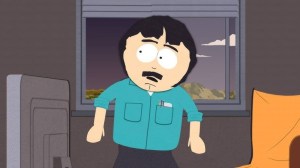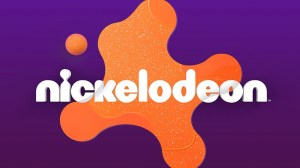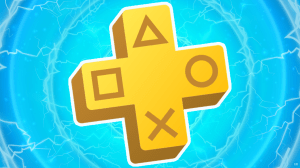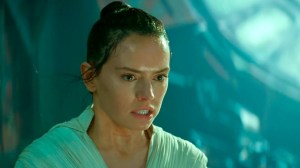
Now that the Green Lantern Corps are present and accounted for Robert Venditti’s Hal Jordan and the Green Lantern Corps is ready to move into a higher gear, with artists Ethan Van Sciver and Rafa Sandoval driving one of the biggest and strangest casts in comics into one of their biggest stories in years.
Videos by ComicBook.com
Sinestro and his Corps have essentially taken over the law enforcement mandate of the Green Lantern Corps while they’ve been gone, and the result is a brand of justice that’s a lot more brutal. It’s up to Hal and the (largely disoriented) Corps to get their act together and get things back to normal.
Venditti recently talked to ComicBook.com about the series. You can read the first two issues of Hal Jordan and the Green Lantern Corps here.
Now that everybody’s seen Hal Jordan and the Green Lantern Corps, one of the things that I was intrigued by is that you’ve taken like five ideas that we’ve seen before, and are kind of using them to create something new. Was that born out of Rebirth, or was that just the direction you were kind of headed with your mythology anyway?
It’s a little of both. I think if you’ve been reading Green Lantern and the Sinestro series up to this point, you can see that some of these seeds were already planted, but on the other side of the coin, very much so, it’s kind of the mission statement of Rebirth to embrace all the long histories and legacies of these characters and take all the great toys that are in those toy boxes, and play with them in a new way. You know what I mean?
Certainly we’re taking Sinestro Corps War, which is a fantastic story by Geoff and Ethan Van Sciver, one of the classic Green Lantern stories, we’re kind of taking that and flipping it on its head, where the Sinestro Corps is now the established police force, and the Green Lanterns are going to have to be the insurgents. Elements like that that we’re reversing, but hopefully it ends up being a perfect mix of embracing the old and creating some new stuff as well.
Something that stuck out was the idea of having the power all internalized and having the ring be something that’s made out of will. That was actually something that we saw from Alan Scott in the 90s. Was that intentional, or was that a happy accident?
No, I just thought it would be an interesting thing for Hal to forge his own ring. The impact it’s going to have on the series going forward…it’s not a moment that is self-contained in the Rebirth one-shot, and that’s the end of it.
The fact that he’s wearing a ring forged from his own will is something that’s going to play into the series for quite a while. I just thought it would be a new way for him to reclaim his mantle, design a new ring for him, create his own ring that would be, as Ethan Van Sciver describes it, it’s a ring made by a human for a human to wear. It’s not made by aliens for aliens to wear. It’s a very utilitarian ring in its design, like a pilot might wear.
I just thought it would be an interesting way to sort of extend that aspect of his personality into something tangible, and then make it a story element as well.
Is that a way to kind of play with the relationship between Hal and the Guardians? The Guardians seem to have this arc that they go through every so often where their significance is challenged, and it’s always a little bit of a different way that they have to come back and reassert the status quo.
Yeah, it’s always Hal who’s the one who’s pushing those boundaries. He has a line in the one-shot where he says, “The Guardians have always said only they can make a ring. I can’t believe it took me this long to prove them wrong.” You know what I mean? Why did he never try that before? That’s kind of his personality. He’s always pushing those boundaries. He believes he’s capable of anything, and because willpower, and that belief in yourself is sort of what defines a Green Lantern, because he believes he’s capable of anything, he’s kind of capable of anything. It really ties into what is at the core concept of the Green Lantern characters.
That’s something that Ron Marz used to talk about with Kyle: Once you remove the impurity, Green Lanterns are exactly what they believe themselves to be in a lot of ways.
I think that’s a great way of putting it, because I think maybe from the outside it could be easy to say that there’s these four human Green Lanterns that are all in our book. You’ve got John, Kyle, Hal, and Guy, and they’re all kind of the same. They’re all Green Lanterns.
It’s like they do have that common element that they were chosen for their willpower, and that’s what defines you as a Green Lantern, but they all come at it in completely different ways.
Hal is somebody who goes with his gut, and trusts his instincts, and he’s intelligent, but he’s very impulsive. He’s got that sort of pilot mentality. John Stewart is somebody who is also highly intelligent, but he sees all the chess pieces. He has that restraint. His willpower is almost channeled into a restraint where he waits for the moment to strike, and he sees where all the pieces go.
Then you’ve got somebody like Guy, who is almost tragic in his own way, because he always feels like he has something to prove. The person he has to prove it to is himself. He’s a very accomplished Green Lantern, and has this great career as a Lantern, but he still doesn’t feel like he measures up. That’s what drives him.
For each of these characters, they wear the same ring, and it has the same power set and principle, but the way that they come to willpower, and the way they use it to drive the ring is very different.
How do you balance, in something like Rebirth, where you’re kind of going back to basics with a lot of stuff, acknowledging the character progression and all that that characters like John and Guy have undergone, and not losing that, while still going back to the basics …
It’s just pushing them forward, and staying with those core traits that I was just mentioning to you, which we absolutely are doing. It’s all about plotting stories that put each of those characters into positions where they can shine. We’ve got a Hal story, we’ve got a John story, we’ve got a Guy story, we’ve got a Kyle story.
They’re all going to be in there, all these are going to be rotated in, and you’re going to see how each one of their individual ways of coming up willpower, and being a Green Lantern, can be applied in a different circumstance where, in this scenario, Hal wouldn’t have worked as well as John did. Hal wouldn’t have succeeded where John did. Over here, Guy wouldn’t have succeeded the way that Hal did, or whatever have you.
It’s important for me to say too that none of this is theoretical. I mean, we’re already 12 issues in in terms of script, and we’ve got six issues drawn, so I’ve already done a Hal story. I’ve done a John story. I’ve done a Guy story. This is all already applied, and I wish I could talk about it in more detain. I could give you specific examples, but I can’t do that yet.
With the rotating arc themes, are there certain artists where you’re just like, “Okay, if I’ve got Ethan this issue, it’s got to be Hal-centric, because his Hal just kicks ass.” Is that just a question of you’re writing the scripts and whoever is drawing it is drawing it?
Well, everything Ethan does kicks ass. Right? He co-created a lot of the mythology and the characters that we’re dealing with. I mean, he knows it inside and out. He knows the expressions that Guy makes versus the expressions that John makes, and just a master at all this stuff. I know one of the great things about Rebirth, from a sort of behind the scenes, production schedule perspective that’s been really great is I started on this series in January, knowing the book wasn’t out until July.
That’s why I’m 12 scripts ahead. I was able to know from the get-go, Ethan is drawing Rebirth and then he’s drawing four and five. Rafa’s drawing #1,2, and 3, and then #6 and 7. Ethan’s drawing #8. I was able to very much tailor the scripts to the individual artists, but not in a way that Ethan’s only drawing Hal, and Rafa’s drawing the others.
I kind of structured it so that there’s an A plot and a B plot. If Hal is the A plot, and the Corps is the B plot, when it changes that’s when the new artist comes in, and then when it goes back, the other artist comes back again. Rafa has a ton of strengths as well. I think he’s really going to surprise people with the quality of the work he’s turning in. People might not be overly familiar with his work, but when he sees this, they’re going to be really excited about what he’s doing.
I think that the fluidity and the sense of motion that Roffa has really lends itself well to science fiction.
Yeah, like his Sinestro and his Lyssa, their capes are always billowing, and Lyssa’s hair is always billowing. Even when characters are standing still, they look like they’re in motion. Just really, really fabulous stuff. I don’t know if they’ll be running images with this piece or not, but maybe you’ll see some of it.
Obviously the idea of the Rebirth one-shot was to kind of get people up to speed, get people onboard. When we head into the series proper, what’s the biggest kind of difference between where you were, and where the rebirth was, and where you’re going?
I think the idea behind the Rebirth on-shot was to sort of tie up a lot of what had happened in the New 52, and then set the stage for what’s going to come next. We certainly did that in that issue. In our first arc on the new series, it’s going to be called “Sinestro’s Law.”
What’s driving it is that Sinestro is now the established police force in the universe, which is a unique scenario for him as well, because now he’s the guy who has everything to lose, and he’s never been in that position. He finally has everything that he wants, and that means he has everything to lose. That’s an interesting turn for him as well. We’re going to see Hal’s efforts to protect the universe while trying to find the Corps, and also dealing with Sinestro, who has taken over.
At the same time, we have the Corps, when they make their return, being disoriented. Their numbers have severely dwindled because of the conflicts that they’ve undergone, and now they have to sort of rebuild as well, and where we come out of this first arc, and where we push this series forward after that, is when we’re really going to start getting into some things that I believe are going to catch people by surprise.
Now, I know you’ve said before that John was a favorite of yours for years now. How has it been kind of really getting your hands around Kyle and Guy in a big, starring-role way for the first time?
Guy really surprised me. I always felt I didn’t really get him as much as a character, but once I started writing him, it was almost like he explained to me who he was, and I’ve actually had a really great time writing Guy, and we’ve got a nice arc for him.
In this first arc, he’s one of the A plot/B plots, you know? I’ve really been surprised by him. Kyle, he’s somebody that I haven’t really talked about much in interviews, and we haven’t shown him a lot in imagery, because what we’re doing with him is pretty secretive, and it ties in with a bigger sub-plot. He’s a character that I have worked with in the past as well, whether it was on Godhead, or Lights Out, or those kinds of things.
I do enjoy Kyle. I know a lot of people say, “Which one is your favorite? Which one do you want to write the most?” To me, it really is about the situation. Who’s the best Lantern for that situation, and then I’m always enjoying whoever I’m writing in the moment.
I feel like that’s almost a unique thing to Green Lantern-style books, where everybody has the same power set. People don’t go to Brian Hitch and say, “Well, who’s your favorite Justice Leaguer?” People kind of understand fundamentally that they’re different characters for different purposes.
Yeah, and the Green Lantern fan base sometimes can be a little bit competitive about propping up their own Lanterns.
To me, if it’s a good story, I like all of them. Like I say, it’s all about putting them in situations that allows each of them to shine individually.









